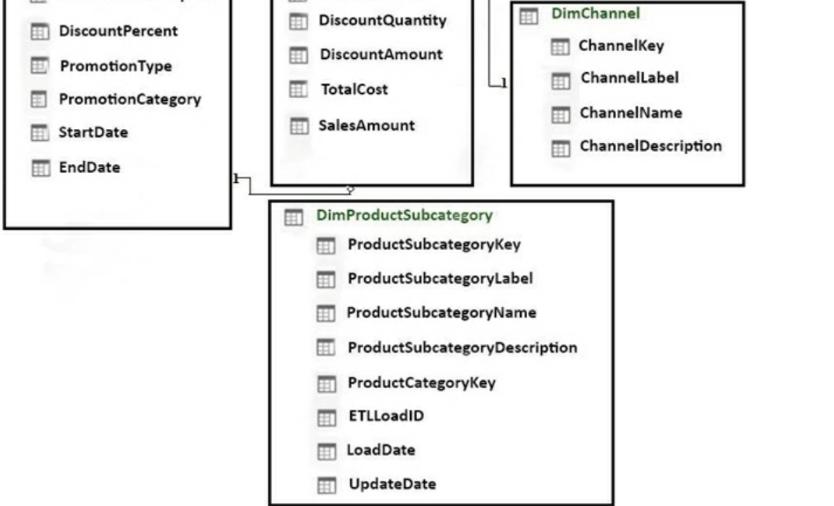HOTSPOT
Note: This question is part of a series of questions that use the same scenario. For your convenience, the scenario is repeated in each question. Each question presents a different goal and answer choices, but the text of the scenario is the same in each question in this series.
Start of repeated scenario.
You have six workbook queries that each extracts a table from a Microsoft Azure SQL database. The tables are loaded to the data model, but the data is not loaded to any worksheets. The data model is shown in the Data Model exhibit. (Click the Exhibit button.)
Exhibit:


Your company has 100 product subcategories and more than 10,000 products.
End of repeated scenario.
You need to create a measure named [Sales Monthly RT] that calculates a running total of [Sales] for each date within a month as shown in the following exhibit.

How should you complete the DAX formula? To answer, select the appropriate options in the answer area. NOTE: Each correct selection is worth one point.
Hot Area:




Should be CALCULATE(SUM(Sales);DATESMTD(DimDate[Date])
It’s not Calculate – Calculate is followed by an expression.
CALCULATE(,,…)
If we used that function, it would be something like CALCULATE(SUM……, ..)
It’s NOT SUM – SUM only uses the entire Column. The difference between SUM and SUMX
SUMX(, )
SUM()
It’s NOT SUMMARIZE because that’s not even valid.
Therefore the first is DEFINITELY SUMX, because its followed by a filter.
As for the second part
DATEADD(,,) Where are these intervals?
DATESBETWEEN(,,) – We have not defined a Start or End Date
DATESMTD() – As you can see, the only one that works in terms of parameters. That makes sense because notice the dates are only for April. The DATESMTD function returns a table that contains a column of the dates for the month to date, in the current context.
PARALLELPERIOD(,,) – We have not Defined a interval
Final answer: SUMX, DATESMTD
You miss the point that [Sales] is a measure. So you don’t need sum or sumx. Those you need when you reference to a Column.
So, correct is
Calculate & DATESMTD
Yes, this answer is wrong. Calculate and DATESMTD is right.
CALCULATE, DATESMTD
This answer is wrong. It’s not DATESBETWEEN as the formula would need to contain a start date and end date.
Yes. This answers is wrong!